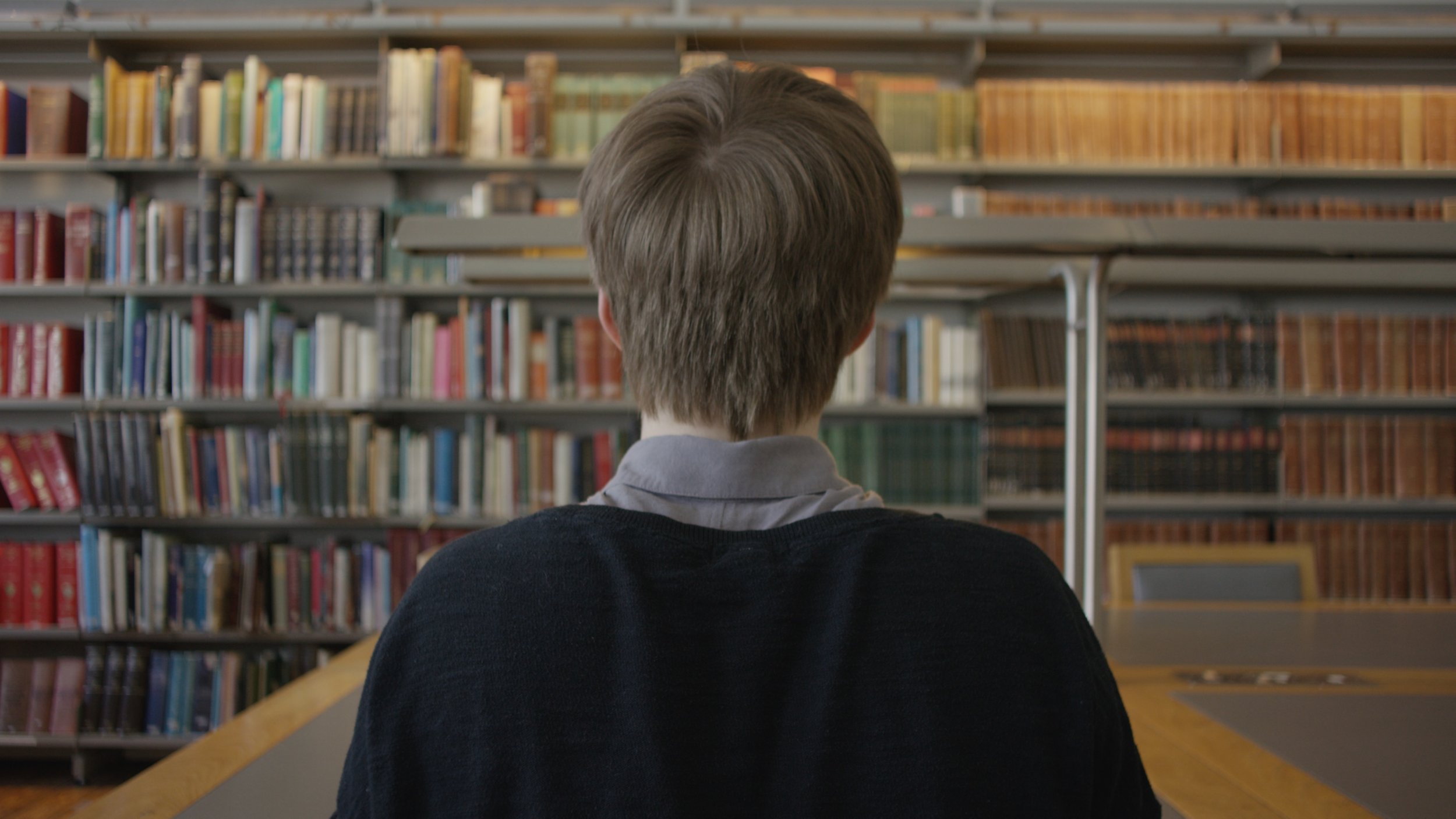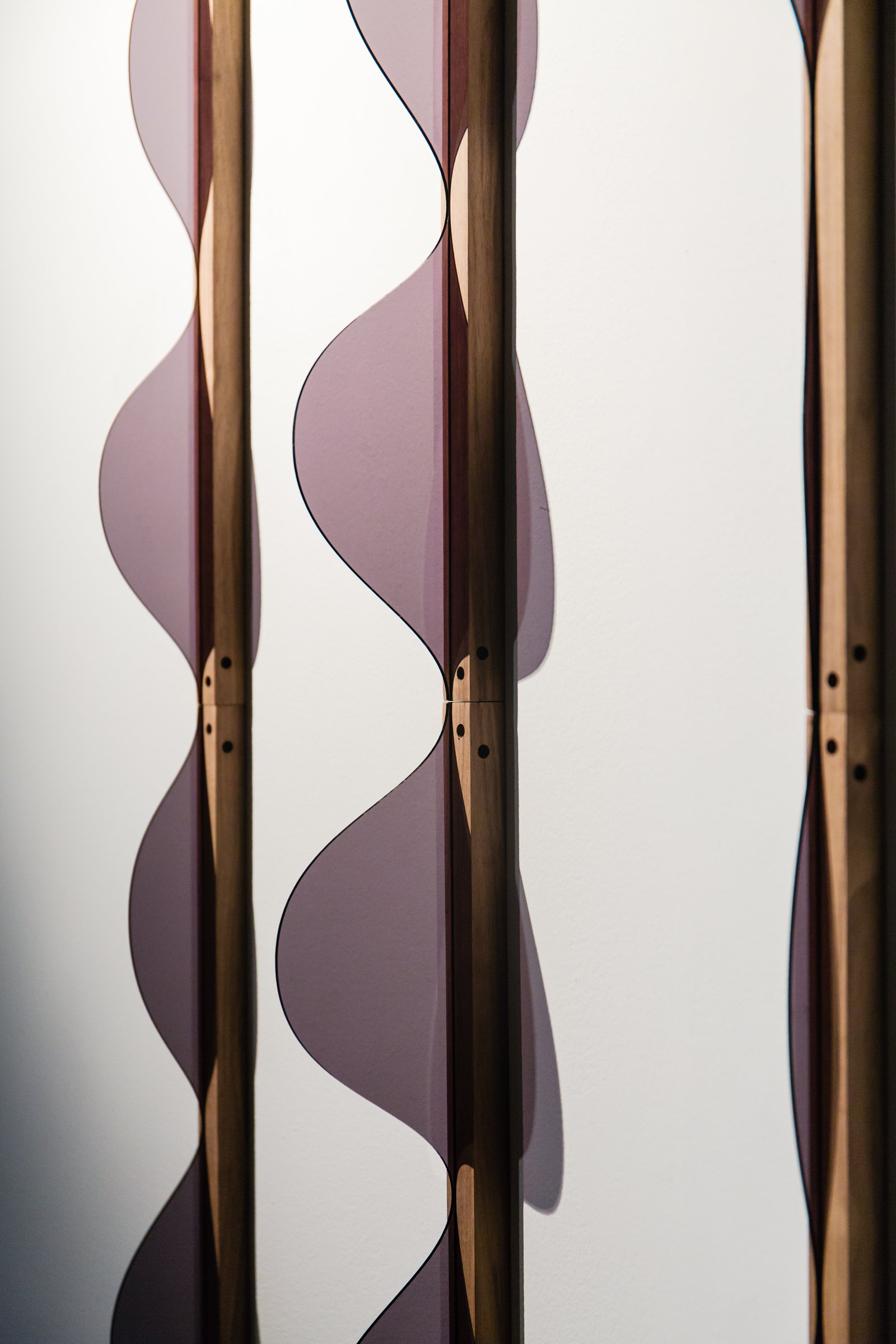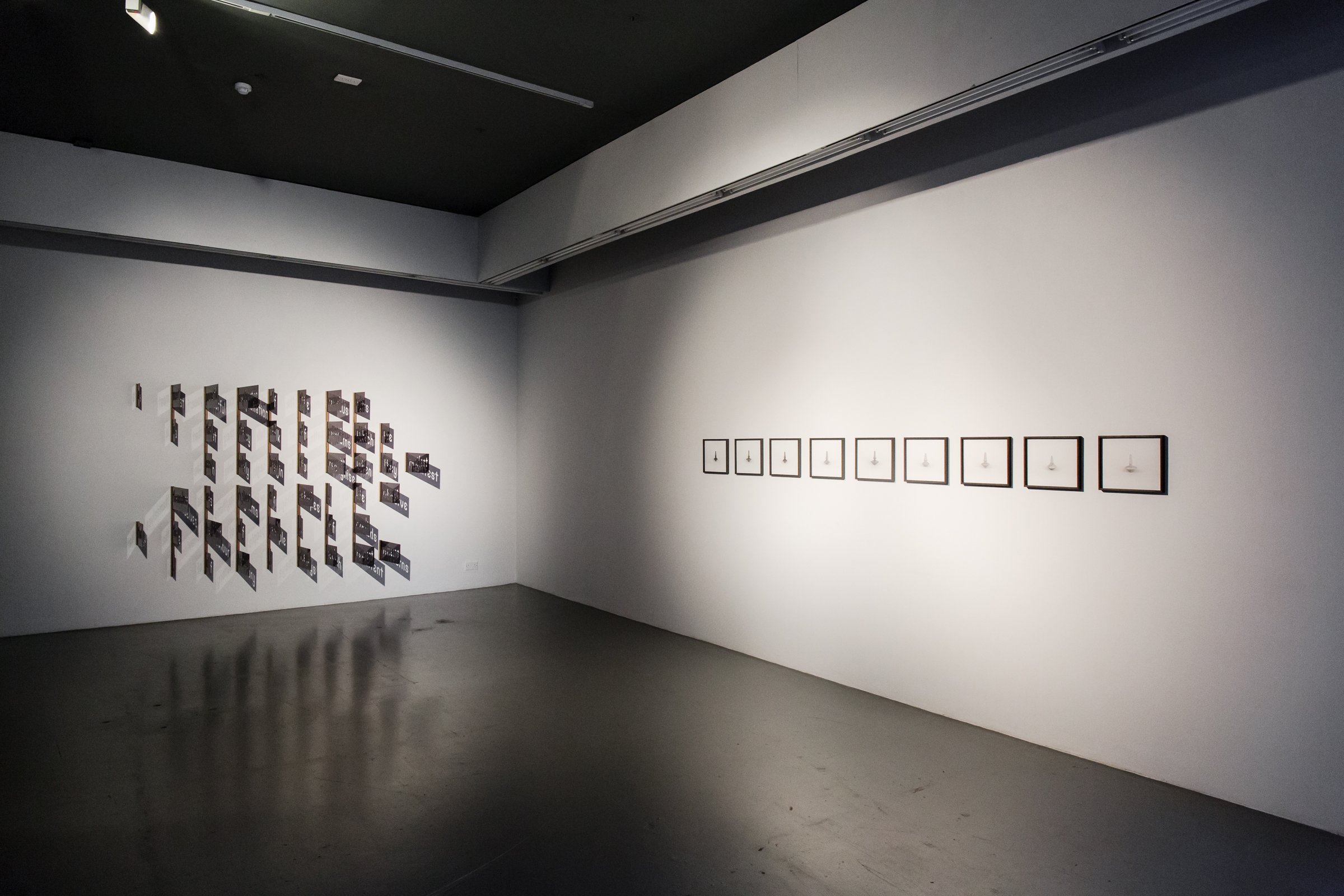Double Movement
Double Movement, 2017 (7’ 40” Edit)
Full film 45 minutes
Double Movement includes works in film, installation, sculpture, text and photography and stems from in-depth research into the now defunct Eblana theatre, which was located in the basement of Dublin’s central bus station Busáras.
Murphy's research is informed by an interest in the cultural and evidential value of architectural structures, which can reflect and focus a wide variety of social facts, from the state of the industrial arts, to the processes of social organisation, and the beliefs and world-outlooks of a whole society. The work takes on further significance as a representation of the lifecycle of an artist-run space, visualising the energy that is needed to maintain a cultural venue like the Eblana, as well as to articulate the significance that these types of projects can have in society.
Busáras was a visionary and contested scheme for 1940s Ireland. At that time, the largest civic building project in post-war Europe, it was was lauded and visited by architects from across the continent. Designed by Michael Scott and Partners, influenced by International Modernism – Le Corbusier in particular – and incorporating the very latest structural techniques courtesy of Anglo-Danish engineer Ove Arup, the building was envisaged as a kind of civic Gesamtkunstwerk (or ‘total art work’), to serve the practical, social and cultural needs of its public users, from a top floor public restaurant which was to become a night-club in the evening, to a ‘rather stylish’ cinema theatre in its basement. An ambitious expression of a nascent modern Irish State, the building conversely became a locus for large-scale Irish emigration to the UK and beyond – travelling abroad by bus and then by boat – from the 50s onwards.
The Eblana was repurposed into a theatre in late 1959, and soon after taken on by actress Phyllis Ryan as a base for her Gemini theatre company. At a time when The Abbey Theatre was not seen to be supporting new writing, the Eblana premièred the early works of Irish playwrights including Brian Friel, Samuel Beckett, and John B. Keane, also bringing the work of playwrights such as Tennessee Williams, Neil Simon, and Joe Orton to a Dublin audience. The Eblana staged plays ranging from populist revues to experimental works, and covered taboo subjects in Ireland of the time such as homosexuality, homelessness and criticism of the Catholic Church. However the artistic fortunes of Gemini and the Eblana gradually declined, and the theatre was eventually closed in 1995. It remains – albeit in poor condition – underneath the station.
The centre point of the exhibition is a long-form, densely worded film. Narrated by the veteran actor and Eblana regular Des Nealon, it portrays shifting points of view referencing Swedish playwright August Strindberg's A Dream Play. One voice morphs into a dialogue of intertextual associations, beginning with that of Michael Scott, through architectural theory and history, archival extracts, engineering calculations, autobiographical accounts, newspaper reports and theatre reviews, to the voice of Phyllis Ryan, Ove Arup, and theatre director Peter Brook's seminal 1968 text The Empty Space. Extracts from plays and stage directions include references to Beckett's Happy Days, Joe Orton's Loot, Máiread Ní Ghrada's On Trial, Eugene McCabe's Pull Down A Horseman, and Fergus Linehan's revue Black Rosie. Elsewhere in the exhibition installed text, sculptural and photographic works act as narrative echoes, rhythms, or silhouettes to the main feature, spatially extending the film's structure and mise en scène.
Events
Thursday 26th October, 2017
Tour of Busáras: Uncovering Michael Scott's Busáras
Prof. Kathleen James-Chakraborty and Gavin Murphy
Venue: Busáras central bus station (Áras Mhic Dhiarmada)
Wednesday 8th November, 2017
Panel Discussion: The city is a theatre of social action—Modernist Architecture and Theatre in Ireland, 1950s–1980s
Speakers: Ellen Rowley, Willie White, Siobhán Bourke, Gavin Murphy
Venue: Temple Bar Gallery + Studios
Thursday 16 November, 2017
Film Screening: Michael Scott: A Changing Man
Introduction by Ciarín Scott
Venue: Irish Architecture Foundation
Temple Bar Gallery + Studios
15 September—18 November 2017
Link
Exhibition credits
Gavin Murphy Double Movement
Curated by Rayne Booth
Featuring Eve Woods, Justine Cooper, Craig Connolly
with
Karl Burke, sound & music
Louis Haugh, still photography
Michael Kelly, cinematography
Des Nealon, voice
Justine Cooper, movement
Oran Day, typography
Peter Mulvaney, wood turning
Fabrication by Philip White, Morris Deegan, Michael Daly
Colour grade & post-production: John Beattie at
Fire Station Artists' Studios
Voice-over recording: Gerry Horan, Contact Studios
Theatre lighting: Margaret-Ellen Donovan
Filming assistants: Greg Purcell and Betsey Goldwasser
Commissioned Writer
Nexus by TBG+S Writer 2017 Gavin Corbett
Double Movement was funded by The Arts Council and The Arup Trust, and is supported by The Irish Architecture Foundation and The Irish Theatre Archive, with thanks to Scott Tallon Walker Architects, Dublin City Archives and Project Arts Centre.
More
A full chronological database of Eblana productions, 1959–1995, researched and compiled by the artist was presented to the Irish Theatre Archive during Explore Your Archive week (18–26 November 2017), to be entered into the collection as a resource for future research on the Eblana Theatre.
Press
Did you know there was an unused theatre under Busáras? Gemma Tipton, The Irish Times, 15 November 2017
Unlocking the past of a radical theatre beneath city bus station Catherine Sanz, The Times, 2 September 2017
Below Busáras, an old theatre worth revisiting Conal Thomas, Dublin Inquirer, 29 August 2017
Dublin's Lost Theatres Sophie Donaldson, Irish Independent, Tuesday 17 September 2019

















